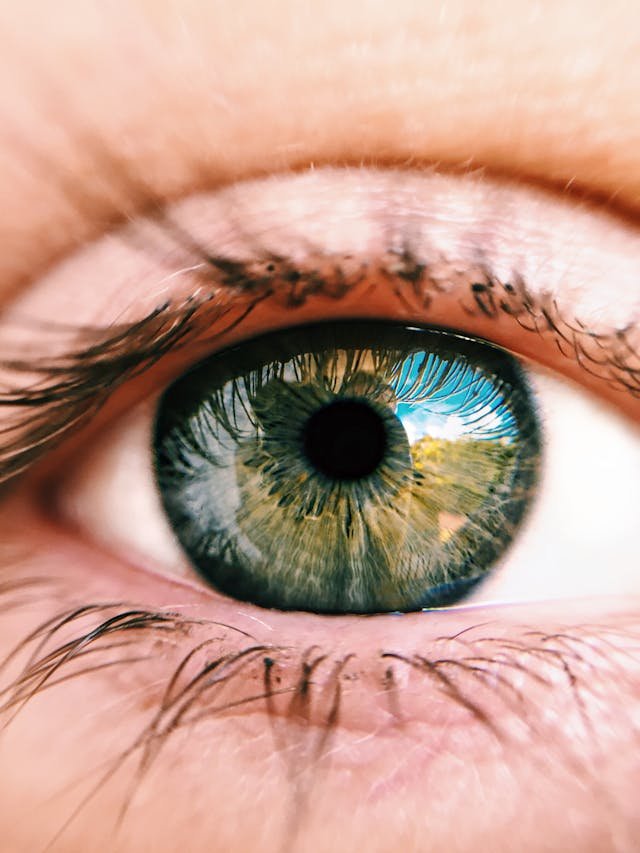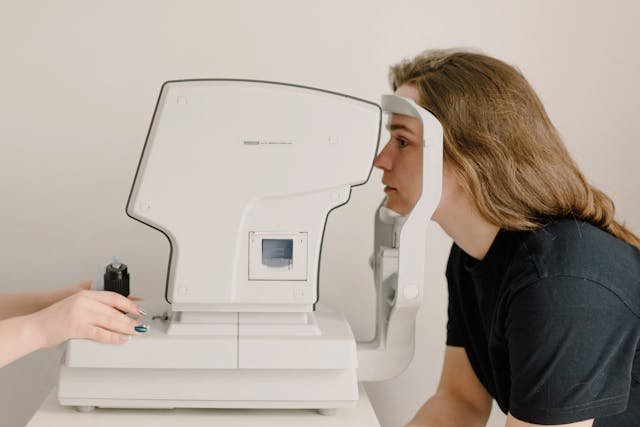Dry eyes are referred to medically as dry eye syndrome. The condition occurs when there is a lack of adequate tears or when the available tears evaporate too fast. Tears are vital in preserving eye health and facilitating good vision. Any distortion of tear production or quality results in discomfort, distorted vision, and permanent eye damage if not treated in good time.
Causes of Dry Eyes

Dry eyes are due to a number of reasons, such as:
1. Environmental Factors: Spending too much time under windy, smoky or dry conditions can lead to evaporation of tears.
2. Screen Time: Extended periods of computer or phone usage can reduce blinking leading to dryness.
3. Aging: Tear flow reduces with age, but particularly after the age of 50.
4. Medications : include antihistamines, antidepressants, diuretics and others as they reduce the tear level.
5. Health Conditions : Autoimmune diseases such as Sjögren’s syndrome can cause dryness of eyes. Diabetes, rheumatoid arthritis and other are also contributing causes.
6. Contact lens use: Extended use of contact lenses has an influence on the normal tear film.
7. Hormonal Fluctuations: Hormonal changes, for example in females when they are pregnant or menstruating, and women using birth control pills may reduce the production of tears.
Symptoms of Dry Eyes
Symptoms can be from mild to severe. The symptoms may include:
- A gritty sensation or a burning feeling in your eyes.
- Redness or irritation.
- Sensitivity to light- Blurred vision or can’t focus
- Sense of something in the eye that won’t go away
- Watery eyes to protect themselves from dryness
- Can’t wear contact lenses
Complications of Untreated Dry Eyes

Untreated dry eyes can result in complications such as: –
- Eye infections since the eye lacks protective tears.
- Corneal damage, such as inflammation or ulcers
- Ongoing discomfort and poor quality of life
Treatment for Dry Eyes
Treatment for dry eyes is aimed at the underlying cause and selection of appropriate treatment. The treatment includes the following:
1. Artificial Tears:
Over-the-counter lubricating eye drops give temporary relief.
2. Prescription Drugs:
Cyclosporine (Restasis), for example, can lower inflammation and stimulate tear production, while lifitegrast (Xiidra) can also reduce inflammation and increase tear production.
3. Lifestyle Modifications:
Blink more often when exposed to screens. Run a humidifier to help maintain indoor humidity. Wear sunglasses outdoors to avoid the wind and sun.
4. Compresses:
Applying warmth to the eyes with wet cloth can help unplug oil glands in the lids.
5. Punctal Plugs
These are small devices installed in the tear duct. They ensure that tears tend to stay on the eyes.
6. Supplements of Omega-3
It improves the quality of tears by reducing inflammation in the body.
7. Surgical procedures
Patients may be required to have surgery when the condition seriously affects the production of the tears.
Preventing Dry Eyes
- Stay hydrated by drinking plenty of water.
- Take regular breaks during screen time.
- Avoid direct exposure to air conditioning or fans.
Conclusion
Dryness is discomforting and annoying. Symptoms can be effectively controlled by proper care and treatment, however. Seek out a specialist in eye treatment for an appropriate individual plan of action if your dry eyes persist. Protecting eye health and achieving clear and comfortable vision hinges on prompt action.
